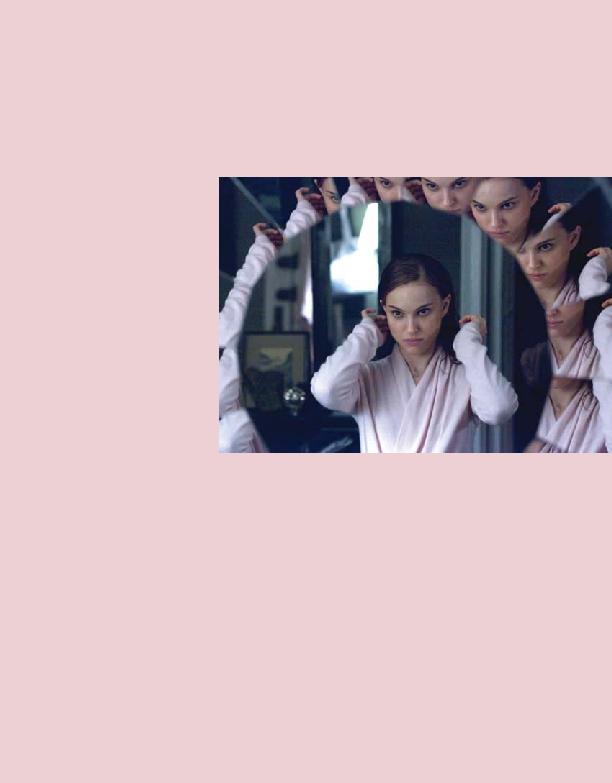
Theatre in New York, where ballerina Gillian
Murphy helped convey to them the stress
and commitment involved in her work.
explains. "I think something Darren's ob-
sessed with is the nature of getting to the top
and then having to leave. That's under a mi-
croscope in the ballet world."
ing a rehearsal of "Swan Lake." "I think we
really felt how brutal it was in person,"
McLaughlin says. "These people are really
powerful. They're landing these jumps and
your chair is flying up in the air because of it.
You watch a ballet from far away, and you
think it's this beautiful, graceful thing, but
when you're inside of it, it's like this brutal
sport. If someone hurts themselves, it's awful
-- but also an opportunity for someone else."
about his own series of outlines, presenting
each one to Aronofsky for feedback. The di-
rector was always heavily involved in the
process, and though Aronofsky wasn't pen-
ning the screenplay himself, by working very
closely with the writers, he could be sure the
result was a reflection of his vision -- a vi-
sion that was still very much in flux at this
stage in Black Swan's evolution.
source material that brings you back,"
McLaughlin says. "At first, I went further
away from The Understudy and then, in the
next draft, it snapped back to that. An artist
can't always identify the parts that are work-
ing for him; whatever Darren saw in that first
draft, you always want to bring that back."
to an extended conversation with the di-
rector, during which McLaughlin would
present his progress for discussion, then go
away to incorporate Aronofsky's notes,
come back to present again, repeating this
process for roughly two years. "While
you're writing, you might take a little turn,
and sometimes he'll respond to that, and
sometimes he won't. Sometimes he'll re-
spond to something that wasn't in the
script at all," McLaughlin says, citing a de-
tail that had intrigued Aronofsky and fac-
tored into his rewriting, but never made it
to the screen: "When we were hanging
around the ballet, there were these weird
them so unsettling. I'm sure they're very
nice people, but some of them wait with
these big notebooks of ballet autographs.
He always wanted that in."
time, "In my time working with him, I've
realized that Darren is a filmmaker where
the idea needs to live with him and be in
his soul. So the development process is very
his head wrapped around it and get his
hands dirty with it. He's not a person where
a script just shows up and he says, `All
right, let's go make this.'"
until he can see the exact thing that he's
wanted. And I would imagine he's still ham-
mering down his idea even as he's shooting,
even in the editing room."
film's themes seemed to take shape during
McLaughlin's leg of the process. "It became
very much about finding the dark side of
your personality to create your art," says
McLaughlin, who was still working within
The Understudy's notion of a doppelganger
and the possibility that the audience would
never be quite sure whether the dancer's
driven by her determination to succeed in
the highly competitive arena. "The funny
thing is, Darren is such a nice guy, but he
likes to take characters to these dark, dark
places," McLaughlin says.
anyone look at the credits on Black Swan
is the sort of filmmaker inclined to take an
unproven writer's script and make that
movie, it's actually far more useful to think
of him as a director who commissions the
kind of screenplays he might otherwise
write himself.
years. After reading a dark, sports-related spec
script called Big Fan by Robert Siegel, former
editor-in-chief of The Onion, Aronofsky con-
tacted the writer and asked him to help
tackle the wrestling movie he had always
wanted to make. With Black Swan, Aronof-
sky never planned to shoot The Understudy;
rather, he saw it as a step toward the ballet
movie he had in his head. In both cases, the
other common link was Mark Heyman.
aspiring screenwriter's final year of gradu-
ate school. "I said something in class that